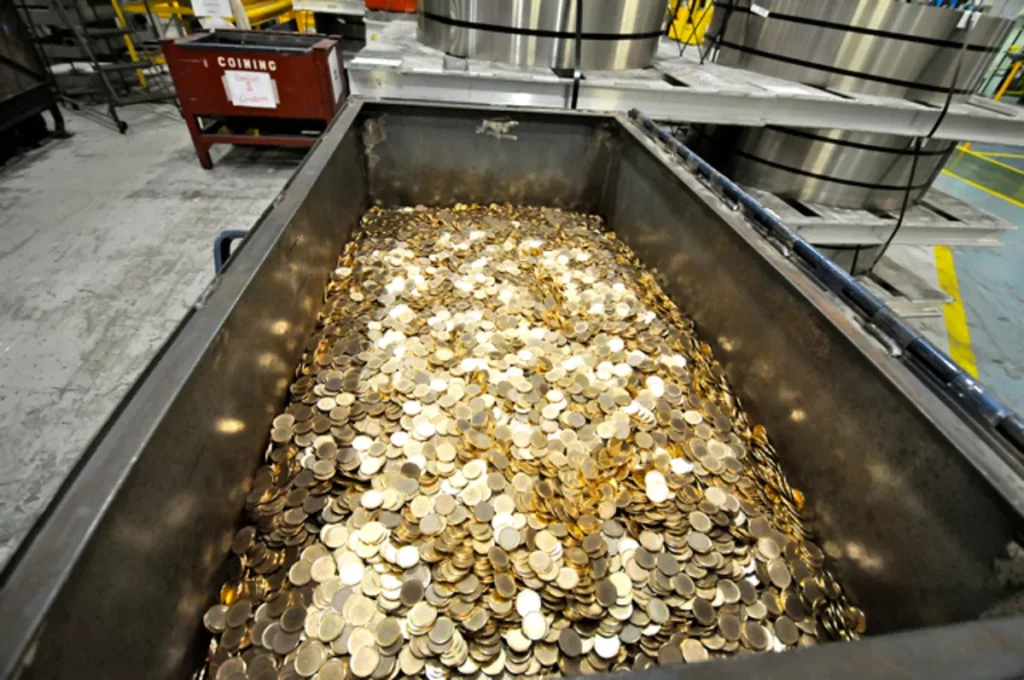Introduction
The journey of a U.S. coin is a remarkable tale of craftsmanship, economics, and history. In a world increasingly dominated by digital transactions, the humble coin endures as a symbol of America’s rich monetary heritage. From the precise art of minting to its eventual retirement, each coin’s lifecycle is a story worth telling. Let’s explore the fascinating path a U.S. coin takes from its inception to its final days in circulation.
1. The Birth of a Coin: The Minting Process
The creation of a U.S. coin is a blend of artistry and precision engineering, and it all starts at one of the United States Mints. Here’s how it unfolds:
- Design and Engraving: Talented artists and sculptor-engravers design the coin, with each detail symbolizing aspects of American history and culture. These designs are then approved by various authorities before production begins.
- Planchet Production: Coins start as large coils of metal, which are fed into blanking presses. These presses cut small, round metal discs called planchets. The metals used vary – for instance, quarters comprise a mix of copper and nickel.
- Annealing and Washing: The planchets are heated in an annealing furnace to soften them, then washed and dried.
- Striking the Coins: Each planchet is struck between two dies in the coining press. This action imprints the intricate designs onto the blank coins.
- Inspection: After minting, coins are inspected for quality. Imperfect coins are melted down and recycled.
2. From Mint to Circulation
Once minted, coins are counted, bagged, and shipped to Federal Reserve Banks. From here, the coins enter circulation in a variety of ways:
- Banks and Businesses: Banks request coins based on demand and distribute them to businesses and consumers. This is often where new coins first enter public hands.
- Daily Transactions: Coins are used for everyday transactions across the nation, continually exchanging hands and pockets.

3. A Coin’s Life in the Economy
A U.S. coin can remain in circulation for decades. It might travel across the country, be part of countless purchases, or end up in a collector’s display. The journey of each coin is unique and contributes to the vast economic network of the U.S.
4. Numismatics: The Collectible Life of Coins
Some coins bypass regular circulation and go straight to collectors. Commemorative coins, special editions, or coins with minting errors become valuable pieces for numismatists (coin collectors), preserving a piece of American history.
5. The Retirement of Coins
Coins are withdrawn from circulation by the Federal Reserve when they are worn out or damaged. These coins are then sent to a Mint for melting and recycling, and the metal is reused for new coins, ensuring a sustainable lifecycle.
Conclusion
The lifecycle of a U.S. coin intertwines with the daily lives of millions of Americans, embodying both utility and symbolism. As we progress further into an era of digital finance, the story of these coins serves as a tangible connection to our past, while also adapting to our future. Each coin not only represents economic value but also reflects the ongoing story of American culture and progress.





 GOOGL
GOOGL  META
META
Leave a Comment